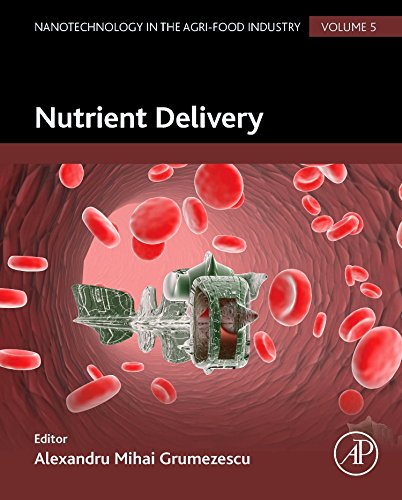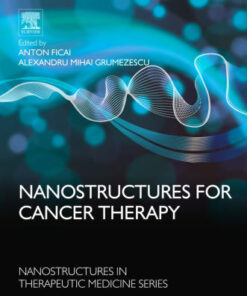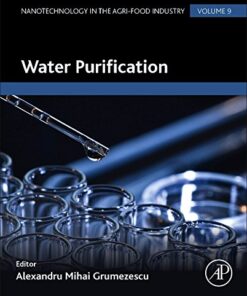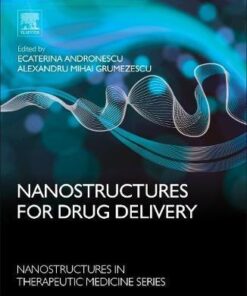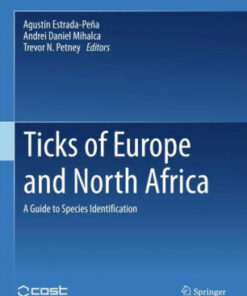(PDF) Nutrient Delivery By Alexandru Mihai Grumezescu
$22.00
Download instantly Nutrient Delivery By Alexandru Mihai Grumezescu. It is ebook in PDF format.
ISBN-10: 0128043040 ISBN-13: 9780128043042
Preview
This is the PDF eBook version for Nutrient Delivery By Alexandru Mihai Grumezescu
Table of Contents
List of Contributors
Series Foreword
Series Preface
Volume Preface
1: Nutrition—nutrient delivery
Abstract
1. Introduction
2. Functional Foods and Bioactives
3. Nutraceutical Formulation Challenges
4. Oral Delivery
5. Bioavailability Enhancement With Nanoparticles
6. Food Grade Delivery Systems
7. Protein-Based Nanodelivery Systems
8. Lipid-Based Nanodelivery Systems
9. Carbohydrate-Based Nanodelivery Systems
10. Polysaccharide Nanoparticles for Nutrient Delivery
11. Chitosan-Based Delivery Systems
12. Regulations Surrounding Nanomaterial Safety
13. Uptake of Nanoparticles and Potential Toxicity
14. Conclusions and Future Directions
2: Nanostructured biobased systems for nutrient and bioactive compounds delivery
Abstract
1. Introduction
2. Design of Nanostructured Biobased Systems
3. Nanostructured Biobased Systems as a Nutrient and Bioactive Compound Carrier
4. Evaluation of Nanostructured Biobased Systems Behavior in Their Passage Through the Gastrointestinal Tract
5. Conclusions
Acknowledgments
3: Nanoscale nutrient delivery systems
Abstract
1. Introduction
2. Bioaccessibility and Bioavailability of Nanoencapsulated Nutrients
3. Nanocarrier Materials
4. Formulation Technologies
5. Nanoscale Delivery Systems
6. Conclusions
Acknowledgment
4: Engineering effective nanoscale nutrient carriers
Abstract
1. Introduction
2. Surface Active Molecules (Emulsifiers)
3. Nanoparticles for the Encapsulation of Hydrophobic Compounds
4. Nanoparticles for the Encapsulation of Hydrophilic Compounds
5. Transport in Nano and Microparticles
6. Discussion and Conclusions
5: Nanotechnology applied to improve functionality in food
Abstract
1. Introduction
2. Delivery Systems
3. Processing of Delivery Systems
4. Applications
5. Market Aspects
6. Challenges Ahead
7. Concluding Remarks
Acknowledgments
Appendix
6: Bioactive compounds delivery using nanotechnology: design and applications in dairy food
Abstract
1. Introduction
2. Nanotechnology Delivery Applied in Food: Theoretical Aspects
3. Safety and Regulations
4. Delivery Systems: Characteristics and Functionalities
5. Biomolecules of Interest for Delivery in Dairy Foods
6. Conclusions and Future Trends
7: Food-derived biopolymers for nutrient delivery
Abstract
1. Introduction
2. Polysaccharide-Based Nanoscale Delivery Systems for Nutrients
3. Protein-Based Nanoscale Delivery Systems for Nutrients
4. Conclusions and Future Perspectives
8: Applications of nanomaterials in functional fortified dairy products: benefits and implications for human health
Abstract
1. Introduction
2. Nanotechnology in Dairy Food Products
3. Milk
4. Methods and Techniques Used for Incorporating Nanostructures into Milk and Dairy Products
5. Health Benefits and Potential Risks from the Incorporation of Nanomaterials into Milk and Dairy Products
6. Conclusions and Final Comments
Acknowledgments
9: Controlled release nutrition delivery based intelligent and targeted nanoparticle
Abstract
1. Introduction
2. Nonpolymeric nanocarriers
3. Polymeric Nanocarriers
4. Conclusions
10: Nanodelivery of nutrients for improved bioavailability
Abstract
1. Introduction to Nanodelivery
2. Nutraceutical Bioavailability Classification Scheme (NuBACS)
3. Techniques for Nanoencapsulation of Nutrients
4. Food Grade Nanodelivery Systems
5. Lipid-Based Delivery Systems
6. Surfactant-Based Delivery Systems
7. Biopolymer-Based Delivery Systems
8. Mechanisms for Nutrient Bioavailability Enhancement with Nanoparticles
9. Conclusions
Acknowledgments
11: Nanotechnology for enhanced bioactivity of bioactive phytomolecules
Abstract
1. Introduction
2. Biocompatible and Biodegradable Nanoparticles
3. Application of Nanotechnology for Improvement in Physico-Chemical Characteristics and Bioactivities of Phytochemicals
4. Potential Challenges for Using Nanoparticles
5. Conclusions
12: Vitamins and minerals fortification using nanotechnology: bioavailability and Recommended Daily Allowances
Abstract
1. Introduction
2. Staple Foods to be Fortified
3. Properties of Vitamins to be Fortified
4. Properties of Minerals to be Fortified
5. Methods of Fortification
6. Development of Fortified Premixes
7. Bioavailability, Advantages, and Toxicity of Nanoencapsulated Micronutrients
8. Quality Assurance (QA) and Quality Control (QC)
9. Conclusions and Perspective
13: Adding biological function to nonbiological nanoparticles
Abstract
1. Introduction
2. Drug Release and Loading Mechanisms
3. Stability of the Nanoparticles
4. Protein/Peptide-Based Drug Delivery Systems
5. Polysaccharides-Based Drug Delivery Systems
6. Perspective
14: Development of phenolic compounds encapsulation techniques as a major challenge for food industry and for health and nutrition fields
Abstract
1. Introduction
2. Sources and Classification of Phenolic Compounds
3. Phenolic Compounds in Human Nutrition
4. Improvement of Phenolic Availability for Nutrition and Health
5. Conclusions
Acknowledgments
15: Role of nanotechnology in enhancing bioavailability and delivery of dietary factors
Abstract
1. Introduction
2. Nanotechnology and Nutrient Delivery
3. Food Microstructure for Health
4. Opportunities for Nutrition and Health
5. Conclusions
16: Enhanced nutrient delivery through nanoencapsulation techniques: the current trend in food industry
Abstract
1. Introduction
2. Nutrient Delivery Systems
3. Digestion and Absorption of Nanoformulations
4. Testing the Efficacy of the Encapsulated Nutrients
5. Targeted Delivery of Nutrients
6. Nanostructures, a Class of Modified-Release Products
7. In Vitro–in Vivo Correlation (IVIVC)
8. Evaluation of Nanostructures in Food Matrices
9. Safety Assessment of Nanostructures in Food
10. Conclusions and Future Prospects
17: Nutrient delivery through nanoencapsulation
Abstract
1. Introduction
2. Delivery of Water Soluble Vitamins
3. Delivery of Fat Soluble Vitamins
4. Conclusions
18: Colloidal systems: an excellent carrier for nutrient delivery
Abstract
1. Introduction
2. Challenges Associated with Delivery of Nutrients
3. Colloidal Systems for Nutrient Delivery
4. Conclusions
19: Supplementing selenium and zinc nanoparticles in ruminants for improving their bioavailability meat
Abstract
1. Introduction
2. Digestive Function in Ruminants
3. Sources and Physiology of Selenium and Zinc in Ruminants
4. Deficiency of Zinc and Selenium in Humans
5. Selenium and Zinc in Muscle
6. Nanotechnology Applied to Animal Production
7. Polymers Used in the Formulation of Nanoparticles
8. Nanoparticles Characterization
9. Designing of Selenium and Zinc Nanoparticles: An Experience
10. Toxicity of Nanoparticles
11. Conclusions
20: Lipids from oleaginous yeasts: production and encapsulation
Abstract
1. Introduction
2. Microorganisms for Lipid Production
3. Composition of Fatty Acids in Microbial Lipids
4. Fermentation Conditions for SCO Production
5. Bioresources Available for Lipid Production
6. Stoichiometry of Carbon to Lipid Conversion
7. Mechanism of TAG Production in Oleaginous Yeast
8. Modes of Cultivation for Microbial Lipid Production
9. Economics of Microbial Lipid Production
10. Downstream Process
11. Encapsulation
12. Future Perspectives
13. Conclusions
Subject Index
